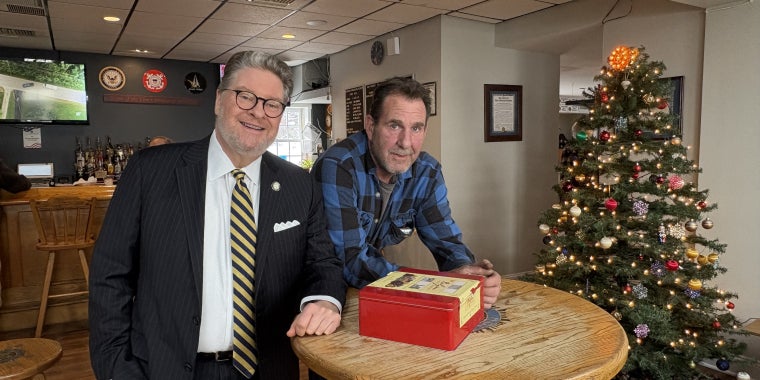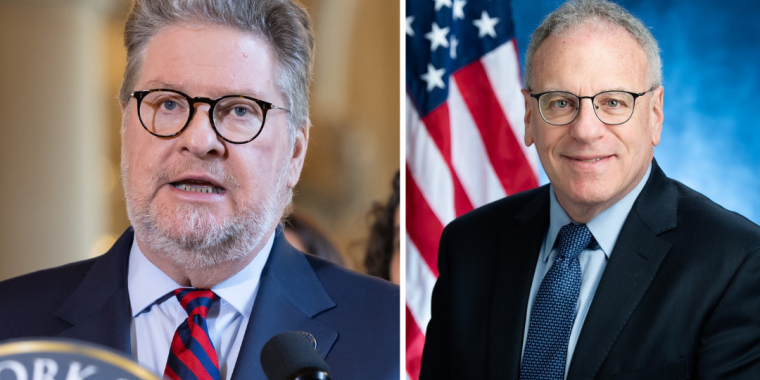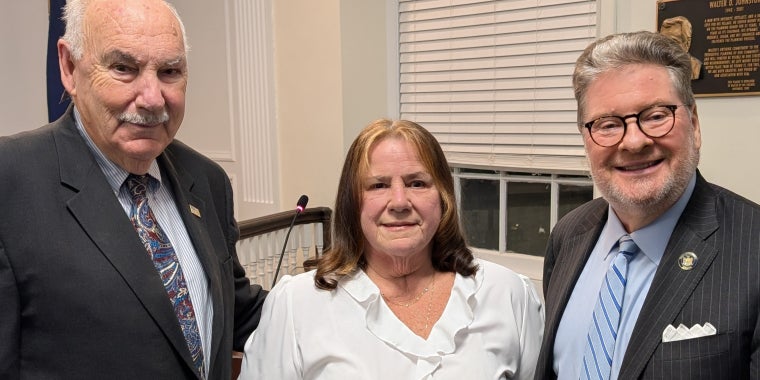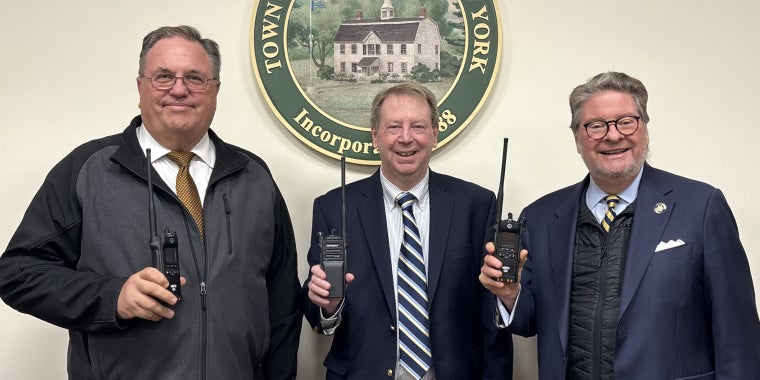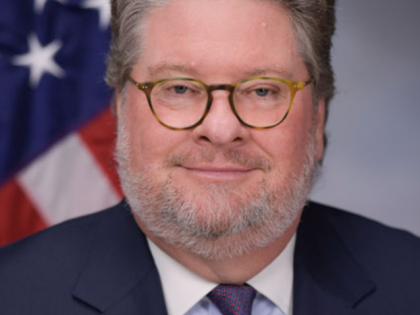
Harckham, Legislators and Advocates Lead Call for EPA to Oversee Full Cleanup of PCBs in the Hudson
March 21, 2024
-
ISSUE:
- Senator Harckham. SD40
- PCBs
- Protecting the Hudson River
- Toxic Chemicals
- Clean Water; Environmental Protection
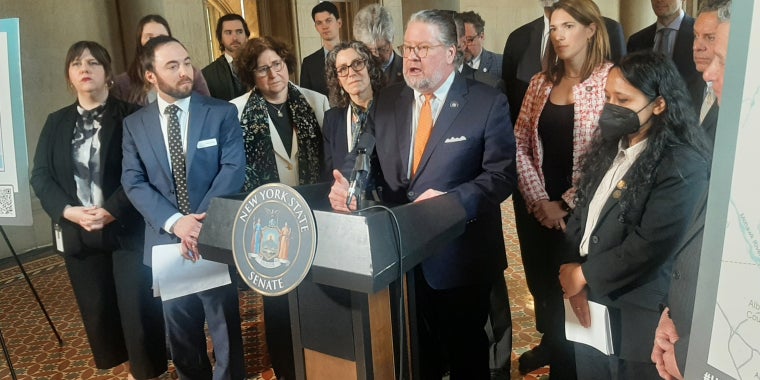
State Sen. Pete Harckham at the Hudson River PCB cleanup press conference in Albany
Albany, NY – New York State Senator and chair of the Senate Environmental Conservation Committee Pete Harckham, state legislators and a coalition of environmental groups led by the Friends of a Clean Hudson and the Black, Puerto Rican, Hispanic & Asian Legislative Caucus (BPHA) called today on the U.S. Environmental Protection Agency (EPA) to oversee a full PCB cleanup of the Hudson River.
Next month, the EPA is set to release its third five-year review of the polychlorinated biphenyls (PCBs) cleanup effort in the Hudson River, where General Electric dumped 1.3 million pounds of the toxic “forever” chemical between 1947 and 1977. The cleanup ended in 2015, yet the spread of GE’s PCBs has continued and is found in unsafe levels in the Hudson River as far south as New York Harbor.
The call for the cleanup was made at a special press conference held at the State Capitol. Harckham and 43 state legislators—17 Senators and 26 Assemblymember—recently sent a letter to the EPA asking for the adoption of a “not protective determination” for the site, and that the federal agency acknowledge the failure of the Upper Hudson River dredging, undertaken between 2009 and 2015, to meet the goals of ridding the river of PCBs.
“Until a significant amount of PCBs, laden in the river’s sediment, can be removed and this environmental travesty mostly remediated, the contamination of the Hudson will continue to impact public health and hinder economic promise in the region,” said Harckham. “It’s time for the EPA to stand up to General Electric and require it to clean up the PCBs it dumped into the river for three decades.”
Among the state legislators attending the press conference, many of them signatories to the EPA letter, were State Senators Michelle Hinchey, John Liu and Robert Rolison; and Assemblymembers Chris Eachus, Patricia Fahy, Emily Gallagher, Dana Levenberg, Steve Otis, MaryJane Shimsky, Sarahana Shrestha, Tony Simone, Deputy Majority Leader Michaelle C. Solages, chair of the Black, Puerto Rican, Hispanic & Asian Legislative Caucus, and Carrie Woerner. Also speaking at the event were former EPA Regional Administrator Pete Lopez and Dr. Aaron Mair of the Arbor Hill Development Corporation.
The letter to the EPA states, in part: “The complex nature of PCBs ensures that General Electric’s toxic waste will continue to travel throughout the Hudson River, resisting degradation, biomagnifying in food chains, and bioaccumulating in human and animal tissue. At the current rate, and without additional actions, the health risks and impacts of those living, working, and playing within a heavily polluted Superfund site along a nearly 200-mile stretch of the Hudson River will persist for future generations.”
Noting that the “health and beauty of the Hudson River is critical to the economic vitality of the communities surrounding it,” the letter adds that the remaining PCB contamination means the EPA must “begin the process of assessing additional remedial actions to protect the environment and our vulnerable communities.”
A “wonder” chemical invented in the 1920s, PCBs were perfect for insulating electrical equipment and used widely at GE’s two capacitor manufacturing plants on the Hudson north of Saratoga Springs. Because PCBs are not water soluble, they linger in soil and water for decades; and because they are fat soluble, they remain in human and animal body tissue forever. Exposure to PCBs leads to a number of health issues, including skin irritation, damage to the immune system and cancers.
Tracy Brown, president of Riverkeeper, said, “EPA’s data confirm that the PCBs General Electric discharged are still found at dangerous levels throughout the Hudson River ecosystem. Without additional cleanup, General Electric’s toxic pollution will continue to be absorbed by plants and ingested by wildlife. People living, working, and playing near the Hudson River will continue to face negative health impacts for decades to come. The EPA has an ethical obligation to make a ‘not protective’ determination in the forthcoming five-year review to protect the health of the Hudson and our communities.”
Roger Downs, conservation director of Sierra Club Atlantic Chapter, said “It is clear from the most recent sampling and analysis that GE’s alleged cleanup of the Hudson River is not adequately protective of human health or the environment. The river remains significantly contaminated with PCBs and thousands of New Yorkers, many of whom represent immigrant, low-income and minority communities, regularly eat the fish they catch from the Hudson for sustenance, despite the health advisories. People simply trust long-standing traditions over nuanced warnings, and barring citizens from eating fish does not represent the kind of justice Hudson River communities need. Sierra Club applauds New York’s legislative leaders for recognizing that true justice requires the EPA to fund and implement a meaningful clean-up of PCBs in the river.”
Pete Lopez, executive director of policy, advocacy and science at Scenic Hudson, said, “As the former EPA Region 2 Administrator, I was able to bring EPA and DEC staff together during the second five-year review to jointly assess thousands of post-dredge sediment samples taken from the Upper Hudson. Based on this joint analysis, EPA staff were compelled to acknowledge that the remedy was not on track and that more data was needed to determine if its mitigation efforts would ultimately be protective of public health and the environment. Alarmingly, the data collected for this third five-year review reveals that EPA’s efforts are even more off target than before. The agency must conclude that the remedy is ‘not protective’ and step back to determine how it can put the river on the path to real recovery in our lifetime.”
Aaron Mair of the Arbor Hill Development Corporation said, “From the headwaters of the Adirondacks to the harbor of New York, New Yorkers for generations recreationally and for subsistence enjoyed waters and fish from this unique heritage river. With the passage of the Clean Water Act and cutting-edge science, we know that deadly PCBs discharged by General Electric have placed Hudson River communities at significant risk. EPA has been charged, using science, with overseeing General Electric’s Hudson River clean-up and reduction of PCB contamination. That effort is currently failing. The EPA must now act to enforce more of its dredging remedies to protect Hudson River Valley communities.”
As of March 19, 2024, General Electric had a net worth of $184.6 billion.
Share this Article or Press Release
Newsroom
Go to Newsroom